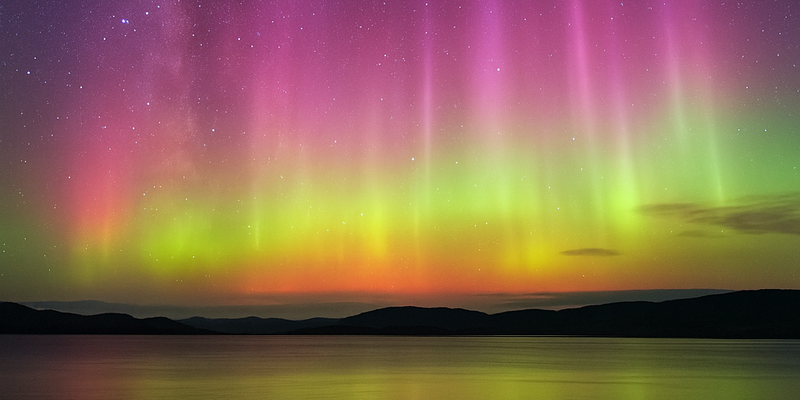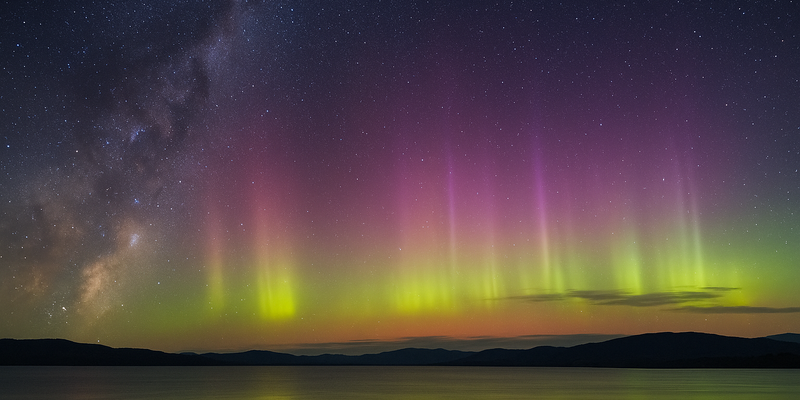Aurora Australis (Southern Lights)
Home . Australia
All About
Aurora Australis (Southern Lights)
About the Aurora Australis
The Aurora Australis, often called the Southern Lights, is one of Earth’s most breathtaking natural phenomena. Similar to the Northern Lights (Aurora Borealis) but seen in the Southern Hemisphere, this dazzling light display paints the night sky in shades of green, pink, purple and sometimes red. Caused by charged particles from the sun interacting with Earth’s magnetic field and atmosphere, the Aurora Australis is a must-see for travellers who crave extraordinary natural experiences.
Where and When to See the Southern Lights
Unlike the Northern Lights, the Southern Lights are less commercialised — making sightings feel wild and authentic. In Australia, your best chances are in Tasmania and parts of Victoria.
- Tasmania – Hotspots include South Arm Peninsula, Cockle Creek, Bruny Island, Cradle Mountain and Mount Wellington (Kunanyi).
- Victoria – The far south coast, such as Wilsons Promontory, Cape Otway and Phillip Island, can also offer sightings.
- Other Southern Hemisphere Locations – Stewart Island and Dunedin in New Zealand, as well as Antarctica, are famous viewing points.
The best time to see the Aurora Australis is during the cooler months of May to September, when nights are long and skies are clearer. New moon phases and minimal light pollution improve visibility dramatically.
How the Aurora Australis Happens
The Southern Lights occur when solar winds carry charged particles toward Earth. These particles collide with gases in our upper atmosphere, creating vivid colours:
- Green (oxygen at lower altitudes)
- Red (oxygen at higher altitudes)
- Purple/Pink (nitrogen)
Activity peaks when the sun releases strong solar flares or coronal mass ejections, so aurora hunters often check space weather forecasts.
Tips for Spotting & Photographing the Southern Lights
- Check Aurora Forecasts – Apps like Aurora Australis Forecast & Alerts or websites such as Space Weather Live predict solar activity.
- Head South & Avoid Light Pollution – Seek dark, southern-facing coastlines or elevated areas.
- Use the Right Camera Settings – A DSLR or mirrorless camera, tripod, wide aperture (f/2.8 or lower), ISO 1600–3200, and long exposure (10–20 seconds) work well.
- Be Patient – Auroras can come and go quickly; staying a few hours can increase your chances.
- Dress Warmly – Winter nights in Tasmania can be freezing.
Why the Aurora Australis Belongs on Your Aussie Bucket List
Experiencing the Southern Lights is more than just a photo opportunity — it’s awe-inspiring and deeply memorable. Standing under a sky streaked with shimmering colours reminds us of Earth’s beauty and our connection to the wider universe. Whether you’re a photographer, adventurer or simply love natural wonders, this is a bucket list experience worth chasing.
Travel Planning Tips
- Combine with Tasmanian Adventures – Pair your aurora hunt with exploring Cradle Mountain, MONA in Hobart, Bruny Island’s gourmet food, or Tasmania’s epic hiking trails.
- Book Flexible Accommodation – Choose stays that allow last-minute changes if weather conditions shift.
- Pack Smart – Warm clothing, thermals, gloves and a good headlamp are essential for long nights outside.
Important Information
Guidelines
- Always do some research before heading out for your journey. Visit the Bureau of Meteorology's website for up to date information on the current conditions.
- Always stay on the marked tracks where possible. Never climb fences, they are there for your own safety.
- Please consider the environment, take your rubbish with you or place in the bins provided. We want to ensure these beautiful places are still here for our future generations to enjoy.
- Ensure to let a responsible adult know of your plans and report back into them once you have finished exploring.
- Leave nothing but footprints. Take nothing but memories.
Photo credit: Aussie Bucket List®
Location
Getting to Aurora Australis (Southern Lights)
Address: Tasmania, Australia
Join the fun and bucket Aurora Australis (Southern Lights)










